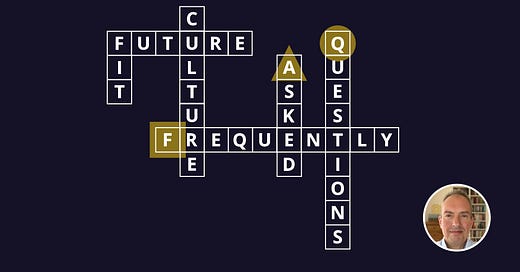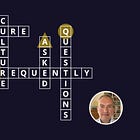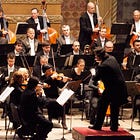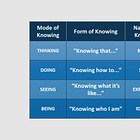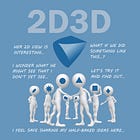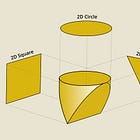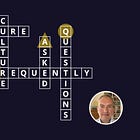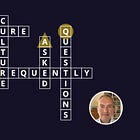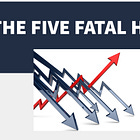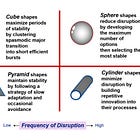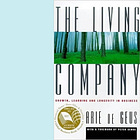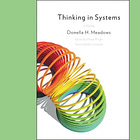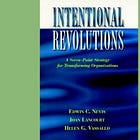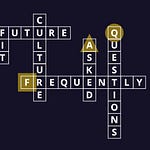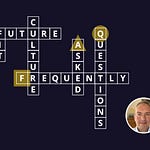“We shall not cease from exploration, and at the end of all our exploring will be to arrive where we started — and know the place for the first time.” — T. S. Eliot 1
To read on — and watch the above video in your browser — click the button below:
T. S. Eliot’s quote above is in the same spirit as another of my favourites: “The real voyage of discovery consists not in seeking new landscapes, but in having new eyes.” — Marcel Proust (Remembrance of Things Past - Volume V, 1923).
Both quotes speak to the essence of creating future-fit cultures — the need to see organisations through new eyes.
This means to stop seeing organisations as “machines for producing products and services” — and associated mountains of moolah for shareholders accompanied by mountains of collateral damage for everyone else, society, and the planet.
It means to start seeing organisations instead as “human communities for creating continuous new value in the world.”
The above shift is simple to state but not easy to create.
The “new eyes” needed to see your way forward don’t just magically appear — they gradually open as you reflect more deeply on what we do in our organisations specifically and our lives in general, why we do what we currently do, and seeing what we discover by experimenting with doing different things and doing them differently.
When the number of pieces published on a Substack channel exceeds three figures it becomes daunting to find your way around. The 17-minute video above was prompted by several requests for a simple “way into” guide to the articles and videos I’ve published here since launching this channel in June 2021.
The video gives a broad overview of some of the major areas I cover, drawing on 40 years of “on the ground” helping organisations in Europe, Asia, and the US to create future-fit cultures of innovation, agility, and adaptiveness for and by themselves.
By the way, “for and by themselves” isn’t a throwaway line. The ONLY way organisations EVER create future-fit cultures is if they develop their own cultural muscles.
Imagine sending someone to the gym on your behalf and then being surprised that you don’t get any fitter. Crazy, no? And yet that’s EXACTLY what many organisations do — by bringing in outsiders to do the heavy lifting…
In the above video I give a brief introduction to each of the linked posts below — a selection — grouped by themes, even though in the deeply systemic domain of organisational culture these are inevitably intertwined.
But hopefully something in there will catch your eye, and if it does, dive in. It’s only by exploring that you get to know the territory — to start to see it with new eyes.
On Future-Fit Culture
Why it’s so dangerous to assume that an organisation can become more innovative, agile, and adaptive if you “eliminate hierarchy” — and why you never actually can…
What culture is — and what it isn’t — is the secret everyone already knows…
What if we approached creating a future-fit culture from the future backwards?
Where will you find the leverage to reform your organisation’s culture?
On the “Values” minefield
How McKinsey made up a model in 1980 that duped everyone, including me, just to rake in more fees…
Despite the corporate corruption of the term, personal values are of real value…
A conversation with Brisbane-based Change and Culture facilitator Stephen Berkeley on “working with values” (47min video).
How to bring to life Socrates’ insight that “The unexamined life is not worth living”?
On Mindsets
“Mindsets” is a term that’s often bandied around — mostly in vague and fluffy ways. Third Generation Cognitive Science to the rescue…
Much has been said, both positive and negative, informed and uninformed, about “Fixed” and “Growth” mindsets. Here’s why they’re not enough…
One of the first cornerstone insights to emerge after a client of the Cambridge innovation lab asked me to “come and help our people behave more like your people”…
Some people seem dead set against mindsets. What’s that all about? [15min video]…
Why “knowing” often doesn’t convert into “doing” — the Seeing-Being Trap…
On Culture Change
Does your organisation use “change managers”, “change agents” or “change catalysts” — and which does it actually need? [19min video]…
Four commonly adopted approaches that seem plausible but inevitably derail serious efforts to create future-fit cultures of innovation, agility, and adaptiveness…
Digging deeper into the number one, top-of-the-pops, show-stopping reason organisations fail to become future-fit — hiring a mainstream “Big Con” management consulting firm…
How do the senior executives in your organisations see “culture”. Is it a way of forcing normative behaviour control? Or is it the secret to unlocking the living, breathing, capacity of people to continuously co-create new value in the world..?
The second worst thing 2 you can do to undermine creation of a future-fit culture is appointing a “Head Of Culture”…
On Influential Thinkers
I had the great fortune to work increasingly closely with Peter Scott-Morgan from the mid-1980’s until his retirement in 2007…
I also worked with Arie de Geus on two boards — we were Directors of the Society for Organisational Learning (UK) from 2009-2015 and both served on the Advisory Board of Lord Owen’s anti-hubris charity The Daedalus Trust from 2010-2017…
I never had the opportunity to work with Donella Meadows directly but her thinking is pivotal to understanding deep leverage when creating future-fit cultures…
I worked with Peter Senge on the Global Leadership Team of the Society for Organizational Learning (SoL) from 2009-2015. Peter’s first book “The Fifth Discipline” (1990) has sold more than 2.5 million copies…
I worked with Joan Lancourt from 1995 to 2001. Her MIT Sloan research published in the 1996 book “Intentional Revolutions” discovered the most pragmatically useful way of getting to with how organisational cultures form — and therefore how they can be reformed:
Next steps…
I’ve published an average of about 40 pieces each year since launching this channel in June 2021. In other words, the above selection isn’t comprehensive but provides various entry points which I hope you might find useful.
Do please feel free to get in touch if the above sparks of any questions. I’ll reply directly and — where it’s appropriate — take up the topic in one of the Future-Fit Culture Frequently Asked Questions videos I publish on the channel.
If you received this post by email you can simply reply — or alternatively click the button below to go to my website Contact page.
» Newsflash «
The single most knowledgeable person I know in the domain of leadership theories, practices, and philosophies throughout recorded history — Dr Richard Claydon — has just launched his Substack channel: “Leadership, Rewritten”. Knowing Richard it will become a “go to” resource on leadership theory, practice, and why it’s broken. Click the button below to visit Richard’s channel where you can also subscribe:
Ready to take action?
My website provides a range of free resources to help you build your organisations capacity for sense making, decision making, and action taking — as well joined-up, dynamically iterated, and constantly renewing capabilities.
Discover how to make the shift for yourselves, by yourselves, from “organisation as machine designed and operated to maximise shareholder returns” to “organisation as human community for shaping a vibrant future by creating continuous new value in the world”.
Contact me to keynote at your next leadership conference or executive retreat, book one of my popular 90-minute "pick Geoff’s brains" sessions for senior executives, or enquire about my mentoring supervision support for future-fit culture catalysts.
T. S. Eliot — Four Quartets, “Little Gidding” V, lines 239–243 (pub 1942).
The first is hiring a mainstream “Big Con” management consulting firm — see The Five Fatal Habits in the section above “On Culture Change”.

